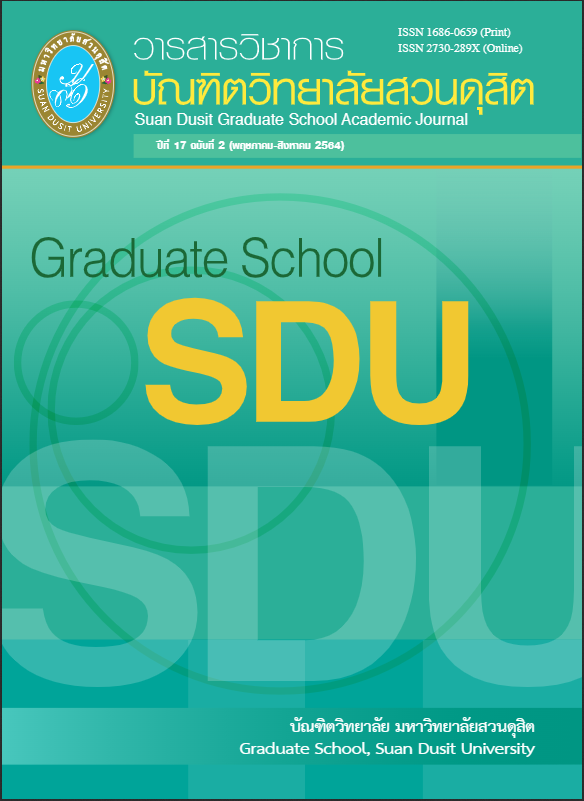Guidelines of Performing Duties of Prosecutor and Governing Officers With Conducting a Mutual Autopsy
Keywords:
Operational Guidelines, Prosecutors, Governing Officers, Mutual AutopsyAbstract
This research aimed to study the operational guidelines, the associated problems and obstacles encountered by prosecutor and governing officer when a mutual autopsy occurred and to propose solutions for those problematic issues. The sample group consisted of five prosecutors and five governing officers, who were selected by the purposive sampling method and in-depth interviews was used to collect data. The research data was processed by applying questions from this study as a framework and analyzed using the approaches of data analysis and descriptive presentation. The results of this research indicated as follows:
In the event of a death arising from any action or a death occurs while in custody, the law determined that prosecutors and governing officers were legally required to attend a mutual autopsy. When the autopsy was completed, the prosecutor will file a complaint with the court as prescribed by law in order for the court to conduct a hearing for the death.
Subsequently, the court would issue an order to declare the circumstances of the death. In addition, the findings found three problematic issues, including, (1) Inadequacy of personnel in performing duties (2) Unsystematic regulations and (3) Inadequate budgets for supporting operations. The group of key informants suggested solutions to the problems as follows:(1) There should be trainings about forensic science and forensic medicine to provide more knowledge for practical operations (2) Regulations should be managed in unison. (3) The speed of the budget disbursement system should be improved to provide prompt response.
References
กฤตศิลป์ พูนผลกุล. (2556). กระบวนการชันสูตรพลิกศพพนักงานสอบสวนในกองบัญชาการตำรวจภูธรภาค 9. วิทยานิพนธ์ปริญญาศิลปศาสตรมหาบัณฑิต หลักสูตรศิลปศาสตรมหาบัณฑิต สาขาอาชญา วิทยาและ งานยุติธรรม บัณฑิตวิทยาลัย มหาวิทยาลัยมหิดล.
กฤติมา ธรรมรักษ์. (2550). การบังคับใช้กฎหมายการชันสูตรพลิกศพและสอบสวนคดีวิสามัญฆาตกรรม.วิทยานิพนธ์ปริญญานิติศาสตรมหาบัณฑิต หลักสูตรนิติศาสตรมหาบัณฑิต คณะนิติศาสตร์มหาวิทยาลัยรามคำแหง.
กฤษฎีก็ ฉายาวุฒิพงศ์ .(2557). กลไกการตรวจสอบกรณีวิสามัญฆาตกรรม: กรณีศึกษากันตายจากการกระทำของเจ้าพนักงานตำรวจ. วิทยานิพนธ์ปริญญานิติศาสตรมหาบัณฑิต หลักสูตรนิติศาสตรมหาบัณฑิต สาขาวิชานิติศาสตร์ คณะนิติศาสตร์ปรีดีพนมยงค์ มหาวิทยาลัยธุรกิจบัณฑิตย์
กระทรวงมหาดไทย. (2543). ข้อบังคับกระทรวงมหาดไทยว่าด้วยระเบียบการปฏิบัติหน้าที่ชันสูตรพลิกศพของพนักงานฝ่ายปกครองพุทธศักราช 2543. (2543, 12 เมษายน). ราชกิจจานุเบกษา. เล่ม 117. ตอน พิเศษ 35 ง, หน้า 10. กรุงเทพฯ: สำนักงานคณะกรรมการกฤษฎีกา.
ราชกิจจานุเบกษา. (2478). พระราชบัญญัติให้ใช้ประมวลกฎหมายวิธีพิจารณาความอาญา พุทธศักราช 2477ราชกิจจานุเบกษา เล่ม 52. สืบค้นเมื่อ 20 กรกฎาคม 2562 จาก http://www.ratchakitcha.soc.go.th/DATA/PDF/2478/A/598.PDF.
พสชนัน นิรมิตรไชยนนท์. (2554). ภาพอนาคตของระบบการชันสูตรพลิกศพในประเทศไทย. สำนักงานคณะกรรมการนโยบายวิทยาศาสตร์ เทคโนโลยีและนวัตกรรมแห่งชาติ.
มนตรี เหลืองพยุง. (2553), บทบาทของเจ้าหน้าที่และแพทย์นิติเวชศาสตร์ในการชันสูตรพลิกศพคดีฆาตกรรม. การค้นคว้าอิสระ หลักสูตรวิทยาศาสตรมหาบัณฑิต สาขาวิชานิติวิทยาศาสตร์มหาวิทยาลัยศิลปากร.
สำนักงานอัยการพิเศษฝ้ายพัฒนากฎหมาย. (2543). ระเบียบสำนักงานอัยการสูงสุดว่าด้วยการชันสูตรพลิกศพ พุทธศักราช 2543. สืบค้นเมื่อ 20 กรกฎาคม 2562 จาก http://www.legald.ago.go.th/images/documents/Regulation/Regulation_Attorney_06_06_2543.pdf.
ราชกิจจานุเบกษา. (2560). รัฐธรรมนูญแห่งราชอาณาจักรไทย พุทธศักราช 2560 ราชกิจจานุเบกษา เล่ม 134 ตอนที่ 40 ก. สืบค้นเมื่อ 20 กรกฎาคม 2562 จาก http://www.ratchakitcha.soc.go.th/DATA/PD-F/2560/A/040/1.PDF.
Downloads
Published
How to Cite
Issue
Section
License
Copyright (c) 2021 Suan Dusit Graduate School Acadamic Journal

This work is licensed under a Creative Commons Attribution-NonCommercial-NoDerivatives 4.0 International License.






